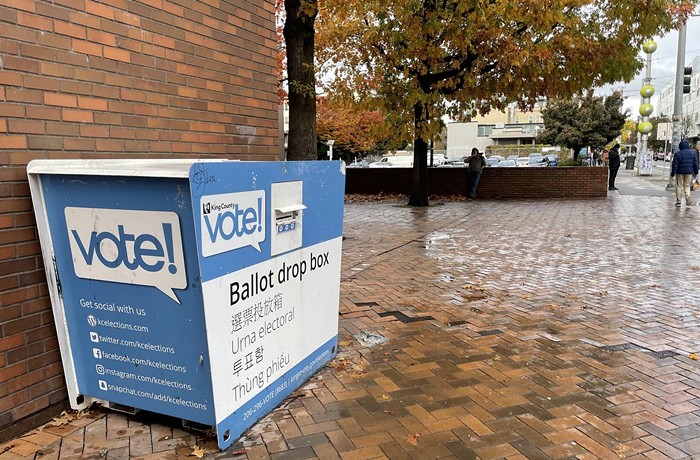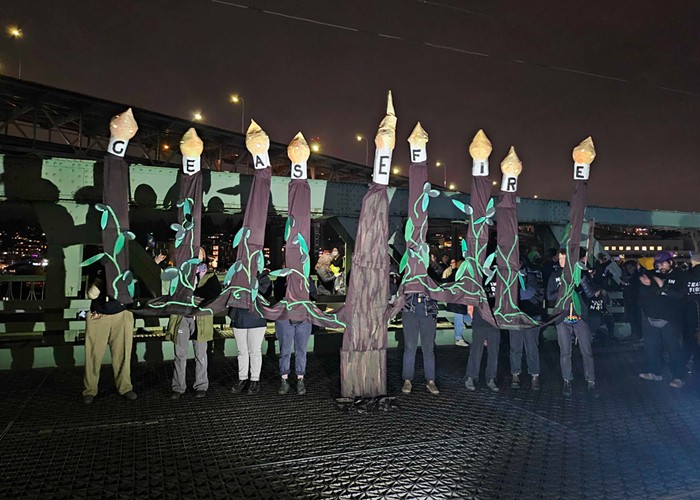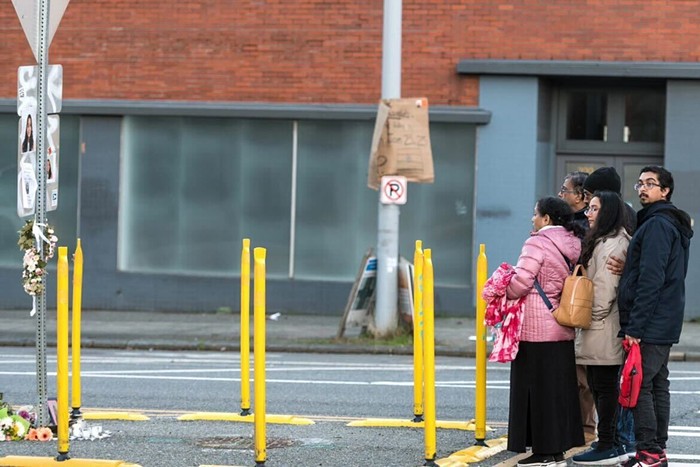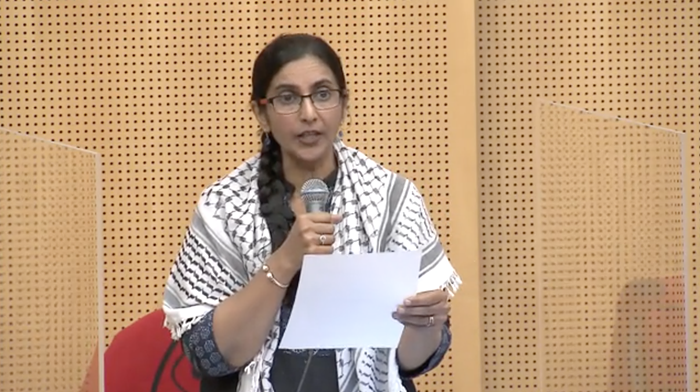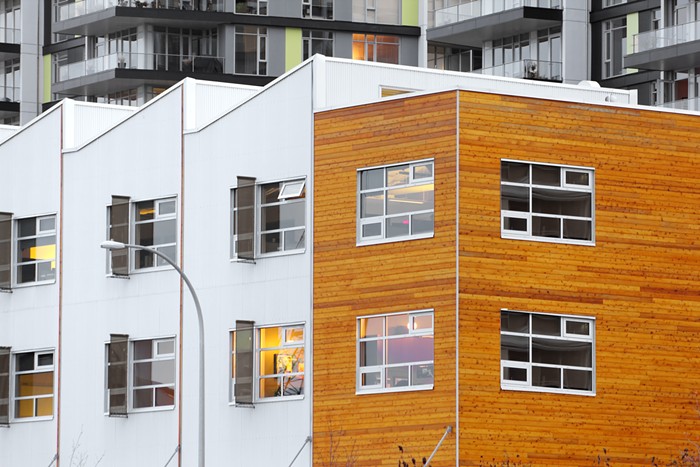
The Navigation Center homeless shelter opened today in Little Saigon, despite opposition from neighborhood residents. Seattle Mayor Ed Murray first announced plans to open the shelter in June 2016. On Tuesday, members of the media were invited to take a tour of the new 24-hour, low-barrier homeless shelter alongside the mayor Ed and Downtown Emergency Services Center officials.
"At DESC, we've been operating shelters and other programs for people who are homeless for a really long time," says Daniel Malone, director of the organization, "and the arrangement has always been that we're providing a survival service and therefore we're going to squeeze as many people in as possible."
He continued: "Along the way, we've sacrificed the quality of the service in order to reach that quantity. What makes [the Navigation Center] different here is that we're going for a high quality arrangement that will provide a robust array of services where people can feel comfortable and ideally make significant progress in their situations that will contribute to them exiting homelessness."
The new homeless shelter will temporarily house up to 75 residents, including couples, people with pets, and individuals under the influence of drugs or alcohol. Residents will also be able to store their belongings at the center while working with case managers to find permanent housing. About 20 people have already been referred to begin living at the shelter, a representative for the Downtown Emergency Services Center told The Stranger.
Some Little Saigon community members have long felt left out of the city decision-making process.
"We're not engaged in the homelessness conversation from the beginning," Quynh Pham, a member of the Friends of Little Saigon neighborhood group, told The Stranger in a previous interview. "We're not part of the solution. We're never thought of as part of a partnership with the city in addressing homelessness. ... We're always seen as NIMBYs because [plans are] imposed on us."
When asked about the Little Saigon community's long-standing frustration, Murray said he thought city officials "did a good job" addressing community concerns by putting a temporary pause on the project in April. However, he said, city officials can work to "get the process better."
"Whether it's this neighborhood or neighborhoods throughout the city, [residents] don't want legal encampments and they don't want shelters," Murray said. "For the most part, that's just the reality."
Murray’s recent outreach to the Navigation Center Community Taskforce “is consistent with [the city’s] long-standing disrespectful attitudes and behavior toward the CID,” Friends of Little Saigon representatives wrote in an e-mailed statement.
The Mayor’s response to the Community Response Plan failed to directly address the community’s concerns. Rather the content refers to past efforts and conversations that lack financial or implementation commitments.
In good faith, the Community Taskforce worked diligently to collect and advocate for the needs and concerns of the community. A draft of the Community Response Plan was released to the City in mid-June with a promise to discuss and respond to the community concerns. The City responded 2 days before the Center is scheduled to open. The unresponsive reply is once again evidence of the City’s disregard for the CID community. Again, the City of Seattle has not kept its word and failed the CID.
In his July 10 letter responding to the neighborhood group's requests outlined in their community response plan, Murray noted "there is already substantial City action and commitment underway" to address concerns. That action includes the Seattle Police Department working to incorporate the Chinatown-International District into the west precinct, which would add three officers to patrol the neighborhood, and conducting a community impact study and budget evaluation of the Navigation Center, Murray wrote. The mayor also noted the Human Services Department gave Friends of Little Saigon $50,000 in funding "to build capacity for community development and planning."

Murray said city officials will measure the success of the experimental Navigation Center by looking at how many of the shelter's residents remain off the streets. The center must connect shelter residents to services to help them regain stability, he said.
When asked about the Navigation Center's 60-day cap on shelter stays, Murray said the city's Housing and Livability Agenda is "key" to keeping these individuals out of homelessness.
"If we want to deal with the issue of homelessness, we also have to deal with the issue of affordable housing," he said. "[HALA] triples the number of affordable housing units in this city... If HALA doesn't move forward, 20,000 families will not have homes in this city. It is the equivalent of trying to stop Obamacare."
City and state officials need to be working simultaneously on addressing immediate needs for people struggling with homelessness while also prioritizing creating affordable housing, said Washington State Representative Nicole Macri, who also serves as the Downtown Emergency Services Center's deputy director for strategy.
"A crisis response only works as well as the ability to refer people into affordable housing," she said. "The state needs to up its game. It needs to invest in housing in all of our communities and invest in safety nets [for struggling individuals]."
Macri, who helped work on the 1811 Eastlake housing project, said the services that will be available at the new, low-barrier shelter are "much more humane" than options at other high-volume shelters across the city. The Navigation Center represents the "the future for the way we want to respond to the crisis of homelessness," she said.
"It's challenging to connect with people, to build that trust and bond with people—bonds that literally help people navigate their way to permanent stability," she said. "That's what this place offers."
This post has been updated.
